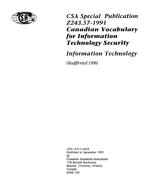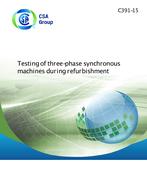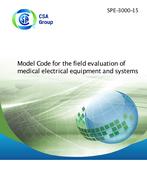Click here to purchase
Preface:
This is the second edition of CSA/ANSI Z21.96 • CSA 11.6, Portable waters heaters for outdoor use. It supersedes the previous edition published in 2014.
The second edition of this Standard has been updated to reflect current industry practice, and address CSA Group’s guide on drafting Standards. Major changes to this edition include the following:
a) increased maximum input limit for portable water heaters;
b) addition of input limit for manual (direct) lighting that aligns with this Standard;
c) unified marking requirements for recreational camping equipment standards;
d) addition of requirement for appliances operating in low-temperature environments;
e) alignment of verbiage with the National Fuel Gas Code (see Clause 11.1.2);
f) clarification under burner operating characteristics that flames are not to flash outside the confines of the appliance; and removal of obsolete wire types.
This Standard has been developed in compliance with Standards Council of Canada requirements for National Standards of Canada. It has been published as a National Standard of Canada by CSA Group.
This Standard has been approved by the American National Standards Institute (ANSI) as an American National Standard.
Scope:
1.1
This Standard applies to portable type gas water heaters (herein after referred to as appliance or water heater) for use with propane, butane, or liquefied petroleum gases and mixtures thereof having:
a) a regulated pressure;
b) a non-regulated pressure.
1.2
Portable type water heaters and components employing materials or having forms of construction differing from those detailed in these provisions may be examined and tested according to the intent of the provisions, and if found to be satisfactorily equivalent, may be given recognition.
1.3
This Standard applies to portable water heater constructed entirely of new, unused parts.
1.4
All references to psi throughout this Standard are to be considered gauge pressures unless otherwise specified.
1.5
All accessories recommended by the manufacturer for use with appliances certified to this Standard are to be supplied and with the appliance.
1.6
A portable water heater is:
a) for point of use (dishwashing, washing, showering, etc.) supply of either potable or non-potable hot water;
b) not for permanent connection to inlet or outlet water lines;
c) only intended for use outdoors and no connections may be provided for venting of combustion products via a chimney or vent system.
1.7
The water heater may be:
a) tank type;
b) automatic storage type;
c) water-tube type;
d) instantaneous type; or
e) multifunction design such as an instantaneous-tube type (see Clause 3 Definitions).
1.8
Portable water heaters are limited to a maximum input of 75,000 BTU/hr (21 980 W).
1.9
Annex A, Items Unique to the United States, contains provisions that are unique to the United States.
1.10
Annex B, Items Unique to Canada, contains provisions that are unique to Canada.
1.11
Clause 2, Reference publications, contains a list of standards specifically referenced in this Standard, and sources from which they may be obtained.
1.12
This Standard contains SI (Metric) equivalents to the yard/pound quantities, the purpose being to allow the Standard to be used in SI (Metric) units. (IEEE/ASTM SI 10, American National Standard for Metric Practice, or ISO 80000-1:2009, Quantities and units — Part 1: General, is used as a guide in making metric conversion from yard/pound quantities.) If a value for a measurement and a corresponding value in other units are stated, the first stated value is to be regarded as the requirement. The given corresponding value may be approximate. If a value for a measurement and a corresponding value in other units are both specified as a quoted marking requirement, the first stated unit, or both shall be provided.
1.13
In this Standard, “shall” is used to express a requirement, i.e., a provision that the user is obliged to satisfy in order to comply with the standard; “should” is used to express a recommendation or that which is advised but not required; and “may” is used to express an option or that which is permissible within the limits of the standard. Notes accompanying clauses do not include requirements or alternative requirements; the purpose of a note accompanying a clause is to separate from the text explanatory or informative material. Notes to tables and figures are considered part of the table or figure and may be written as requirements. Annexes are designated normative (mandatory) or informative (non-mandatory) to define their application.
Product Details
- Edition:
- 2nd
- Published:
- 11/01/2019
- ISBN(s):
- 9781488316562
- Number of Pages:
- 98
- File Size:
- 1 file , 1.3 MB
- Product Code(s):
- 2426400, 2426400


